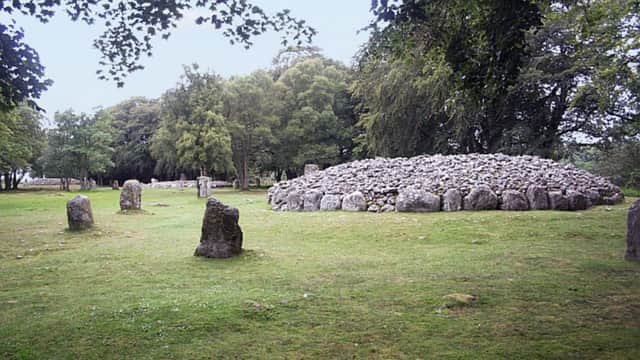Holiday photos of Highland standing stones sought to track 'Outlander effect' at ancient site


Clava Cairns near Inverness has been included on numerous Outlander themed tours and trails with some claiming the Bronze Age cemetery was the real inspiration for Outlander’s fictitious stone circle, Craigh na Dun, which is used by characters to travel through time.
Up to 12 tour buses have been reported stopping at the 4,000-year-old burial complex in a single day with claims some visitors have been spotted climbing on the stones and even performing seances at the site.
Advertisement
Hide AdAdvertisement
Hide AdNow, Clava Cairns has been included in the ‘Monument Monitor’ project which is using everyday photographs to track changes at several historic unmanned sites in Scotland.
A spokesman for Monument Monitor said: “At Clava Cairns we’re currently using your photos to monitor the ‘Outlander effect’.
“Since the popular TV adaptation of Diana Gabaldon’s books aired in 2014, we’ve seen a huge increase in visitors. We want to collect pictures of your visits both before and after this time.
“This will help us to model potential erosion around the cairns as a result of the increased visitor numbers.”
Other sites included in the Monument Monitor project include in Machrie Moor in Arran and Achnabreck in Kilmartin Glen, home to a collection of mysterious cup and ring rock art which is thought to be up to 6,000-years-old.
The spokesman added: “The project looks at how we can use visitor photographs to monitor remote heritage sites. Even whilst social distancing you can help advance real scientific research from home.
“Visitors’ photographs over the years can tell us a great deal about the sites we look after. We can track vegetation growth in castles, erosion of peat caps along walls of iron age forts and monitor ground erosion near our most popular sites.”
Older photographs of the sites are also of great value to the project, which is a joint venture between the Institute of Sustainable Heritage and Historic Environment Scotland.
Advertisement
Hide AdAdvertisement
Hide AdAt Achnabreck, vegetation growth across the ancient rock art site is of particular interest with photos likely to indicate the changing flow of water around the stone carvings.
At Machrie Moor on the Island of Arran, the photographs are helping to illustrate how climate change might be affecting the site.
So far, 100 have been collected but researchers hope to collect many more.
The spokesman added: “Even if we are temporarily unable to explore ancient castles, wander around stone circles and picnic amid the ruins of brochs, we can learn much about them from all our individual experiences from years past.”
Photos can be sent to Monument Monitor via [email protected].
